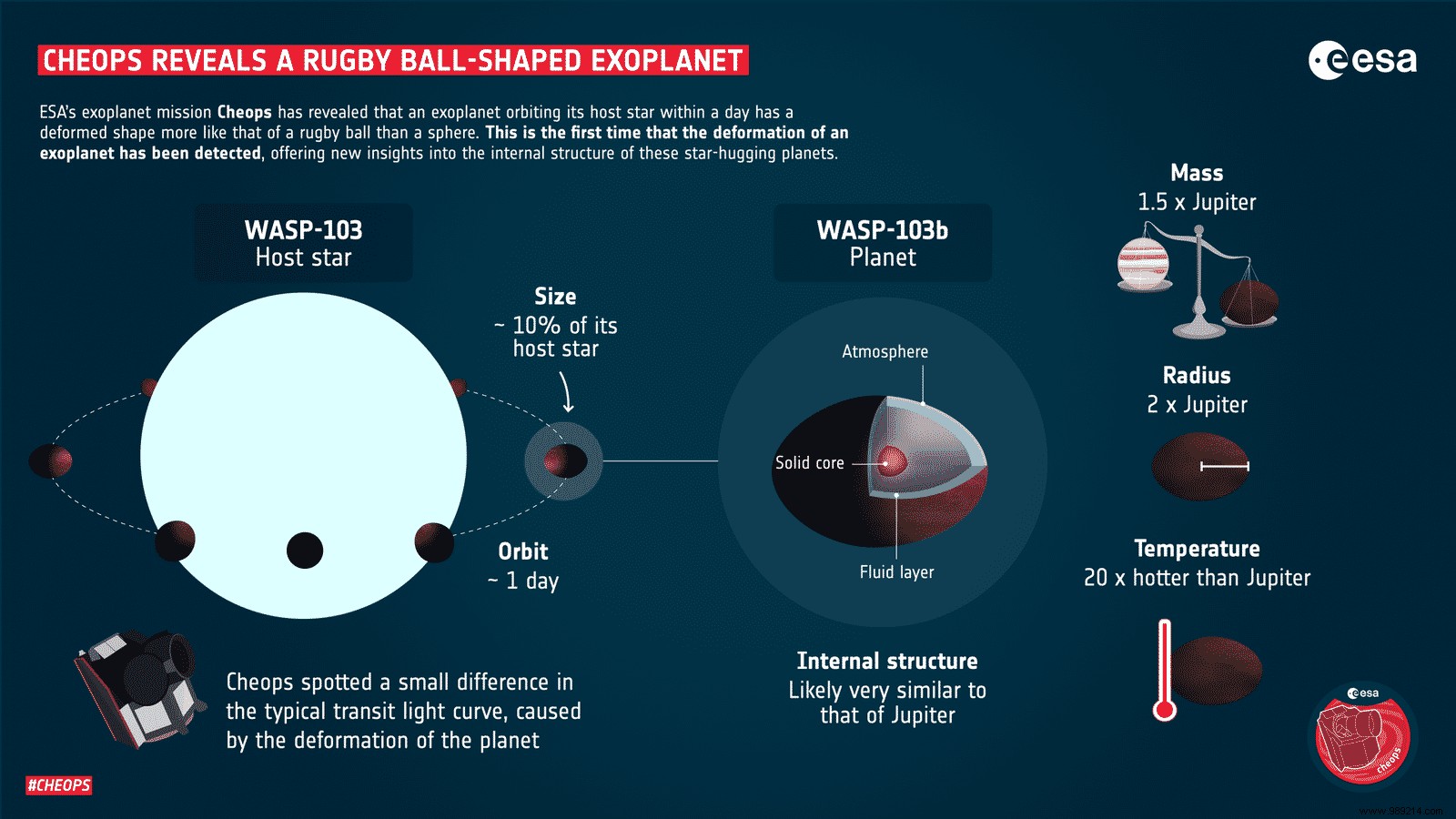By studying the light curve of a star located more than 1,500 light years away, astronomers have spotted an ovoid-shaped exoplanet similar to that of a rugby ball. They think the shape of the planet is caused by the intense tidal forces of its star. Details of the study are published in the journal Astronomy &Astrophysics.
The extreme environment to which planets with ultra-short orbital periods are subjected makes them ideal laboratories for studying planetary physics. In addition to very high temperatures, they also suffer from intense tidal forces which lead to distortion of the shape of the planet. Discovered in 2014, the exoplanet WASP-103b, 1.5 times larger than Jupiter , is an example.
Located about 1,530 light years from Earth , this exoplanet is a hot Jupiter. In other words, it is a planet similar to Jupiter, but which, unlike the patron of the Solar System, evolves very close to its star. In this case, this world completes a tour of its host in less than one Earth day. Another important difference with our local gas giant:this planet is oblong. In other words, it is longer than it is wide and is similar to a rugby ball.
To reach this conclusion, a team of astronomers led by Susana Barros, from the Institute of Astrophysics in Spain, explains that they have scrutinized the transit light curve of the exoplanet. In other words, the researchers were interested in how this exoplanet blocks part of the light from its star as it passes in front of it from our point of view.
To do this, the team relied on the CHEOPS satellite, a space telescope designed to study the structure of exoplanets. The researchers then combined this data with data from the Hubble and Spitzer telescopes. Based on WASP-103b's transit light curve, the team was finally able to determine how the planet's mass was distributed.
In principle, we would expect a planet with 1.5 times the mass of Jupiter to have roughly the same shape. In reality, WASP-103b must be close enough to its star for tidal forces to deform the sphere into an ovoid shape .

"It's amazing that CHEOPS could have revealed this tiny deformation “, emphasizes Jacques Laskar, from the University of Paris Sciences and Letters. "This is the first time that such an analysis has been performed, and we can hope that observation over a longer time interval will strengthen this observation and lead to a better understanding of the internal structure of the planet “.
The team points out that future observations of WASP-103b by the James Webb Telescope may put better constraints on the planet's radius. For the time being, however, the observatory is continuing its journey towards Point de Lagrange 2, which it should reach on January 29.